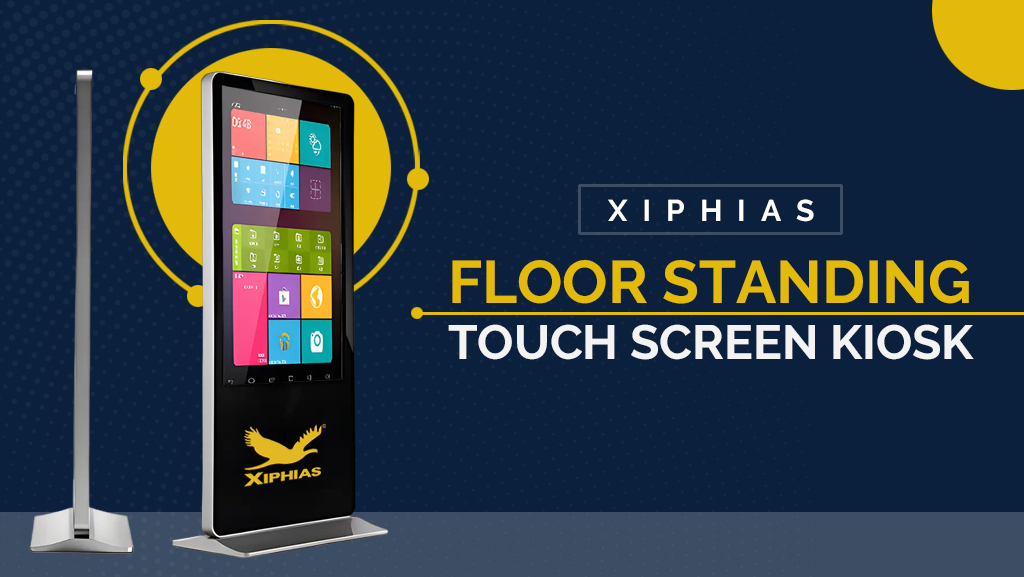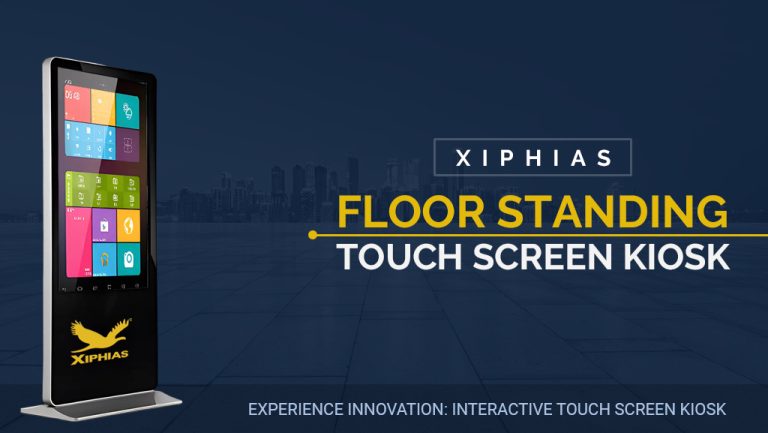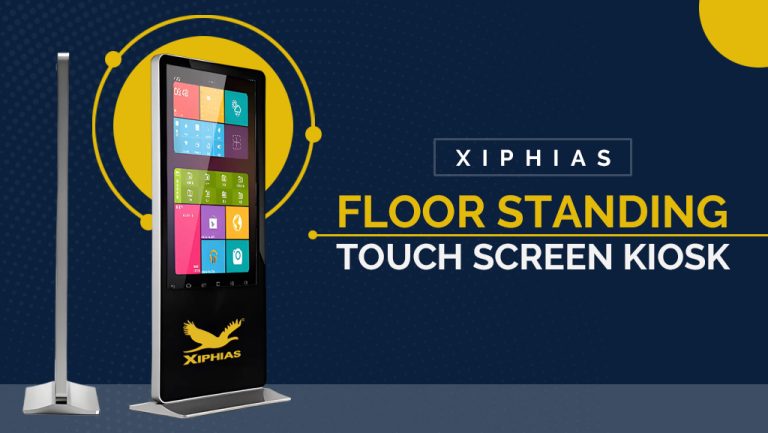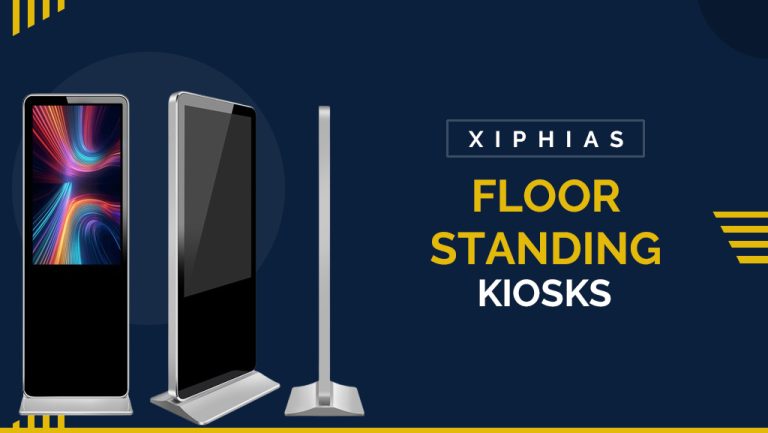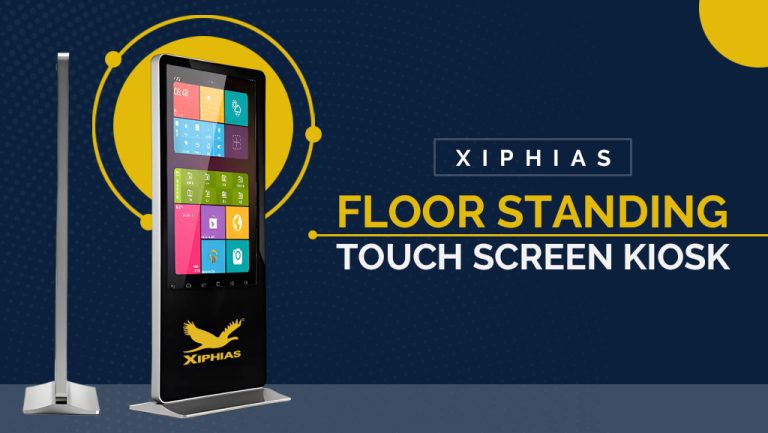How To Save Money with Floor Standing Touch Screen Kiosk?
In today’s business world, efficiency is the key to success. One of the most effective tools for boosting efficiency and saving money is the floor standing touch screen kiosk. These kiosks have gained popularity across various industries, providing cost-saving solutions while enhancing user experience and operational processes. From retail to healthcare, businesses are increasingly adopting these interactive kiosks to streamline tasks, reduce labor costs, and improve customer satisfaction.
Reducing Staffing Costs with Self-Service Capabilities
One of the most immediate cost-saving benefits of floor standing touch screen kiosks is their ability to reduce staffing needs. Traditional customer service models require human staff to manage a wide range of tasks, such as answering inquiries, processing orders, and handling payments. Kiosks enable businesses to automate many of these tasks, allowing customers to serve themselves.
With kiosks in place, fewer employees are needed on the floor to handle basic tasks. This reduces payroll costs while freeing up staff to focus on more critical tasks. For example, in retail, kiosks can process transactions, provide product information, and even assist with returns. In restaurants, kiosks allow customers to place orders directly, reducing the need for waitstaff. Ultimately, businesses can achieve significant savings by decreasing their dependence on human labor.
Increased Efficiency in Customer Interactions
Touch screen kiosks are designed to make customer interactions faster and more efficient. Speeding up transactions and reducing wait times can directly impact a business’s bottom line. Customers appreciate being able to complete tasks quickly, without waiting for staff assistance. This efficiency reduces the likelihood of customer frustration and enhances overall satisfaction, leading to repeat business.
By implementing kiosks, businesses can optimize their workflow and prevent bottlenecks during peak hours. Customers can interact with the kiosk at their convenience, eliminating long queues and minimizing downtime. This enhanced efficiency allows businesses to serve more customers in less time, ultimately driving higher revenue without increasing operational costs.
Streamlining Inventory Management and Sales
Another area where kiosks help businesses save money is inventory management. With integrated software solutions, floor standing kiosks can help track product availability, sales trends, and restocking needs in real time. This feature ensures that businesses have better control over their inventory, reducing excess stock and minimizing the risk of running out of popular products.
Kiosks can be programmed to upsell and cross-sell products, encouraging customers to add more items to their purchases. For instance, in a retail setting, kiosks can suggest complementary products based on the customer’s selections. This automated sales process increases the chances of higher transaction values, driving additional revenue without extra marketing or sales efforts.
Lower Maintenance and Operational Costs
Compared to traditional equipment and manual processes, floor standing touch screen kiosks offer low maintenance costs. These kiosks are built with durable materials, designed to withstand frequent use, and require minimal upkeep. Businesses save on operational expenses, as the need for routine maintenance, paper, and ink is significantly reduced.
Moreover, these kiosks are energy-efficient, designed to operate for extended hours with minimal power consumption. Over time, these energy savings can contribute to reduced utility bills, further cutting down operational expenses. In addition, the integration of digital systems allows for remote troubleshooting and software updates, reducing the need for costly on-site technical support.
Enhanced Marketing and Advertising Opportunities
Floor standing touch screen kiosks can also help businesses save on marketing expenses by serving as an interactive advertising platform. With digital screens, businesses can display promotional content, special offers, and product information directly on the kiosk. This eliminates the need for printing flyers, posters, or other physical materials that can be costly and time-consuming.
These kiosks can also be updated in real-time, allowing businesses to adjust promotions based on current trends and customer preferences. This dynamic approach ensures that businesses maximize their advertising budgets by targeting the right audience with relevant content. By utilizing kiosks for marketing purposes, businesses can reduce spending on traditional advertising while reaching more customers effectively.
Improved Data Collection and Customer Insights
Touch screen kiosks offer businesses valuable opportunities to collect data and gain insights into customer behavior. With built-in software, kiosks can track customer preferences, transaction histories, and feedback. This data can be analyzed to identify trends, optimize product offerings, and refine marketing strategies.
By leveraging these insights, businesses can make informed decisions without relying on costly market research or third-party services. This data-driven approach not only helps reduce research expenses but also ensures that businesses focus their resources on high-performing products and services, maximizing their return on investment.
Scalability and Flexibility for Business Growth
One of the most significant advantages of floor standing touch screen kiosks is their scalability. As businesses grow, they can easily add more kiosks to accommodate increased customer traffic. This scalability is a cost-effective way to expand operations without needing to hire additional staff or invest in significant infrastructure changes.
Moreover, these kiosks offer flexibility in their applications. They can be customized to serve various functions, from processing payments to providing product information. This adaptability allows businesses to use kiosks in multiple settings, maximizing their utility and saving money on purchasing separate devices for different tasks.
Reducing Human Error and Losses
Manual processes are prone to human error, which can result in costly mistakes for businesses. Whether it’s an incorrect transaction, misplaced inventory, or a missed sale, human errors can negatively impact a company’s bottom line. Touch screen kiosks help minimize these errors by automating transactions and ensuring that processes are carried out accurately.
Additionally, these kiosks provide secure payment options, reducing the risk of theft or loss associated with handling cash. By streamlining payment processes and reducing the need for manual handling, businesses can protect their assets and minimize financial losses.
Conclusion
Floor standing touch screen kiosk are an investment that pays off in numerous ways. They help businesses save money by reducing staffing costs, streamlining operations, enhancing marketing efforts, and minimizing human error. With their scalability, low maintenance costs, and ability to provide valuable customer insights, kiosks are a cost-effective solution for businesses looking to improve efficiency and drive growth.
By adopting these versatile devices, companies can achieve long-term savings and maintain a competitive edge in their industries. Whether in retail, healthcare, or hospitality, the benefits of floor standing touch screen kiosk are clear: they offer a smart and efficient way to cut costs, improve customer experiences, and ensure sustainable business success.

